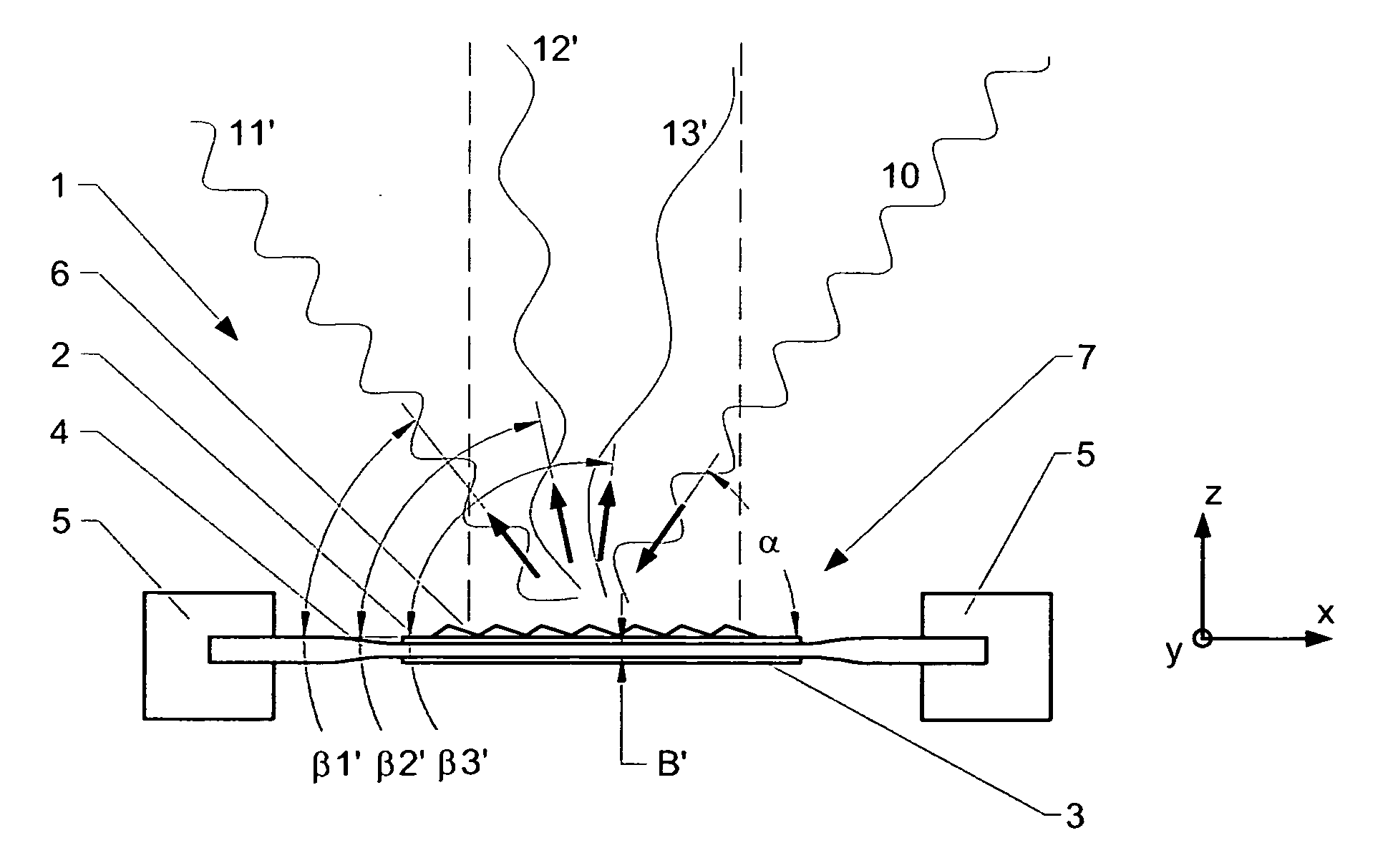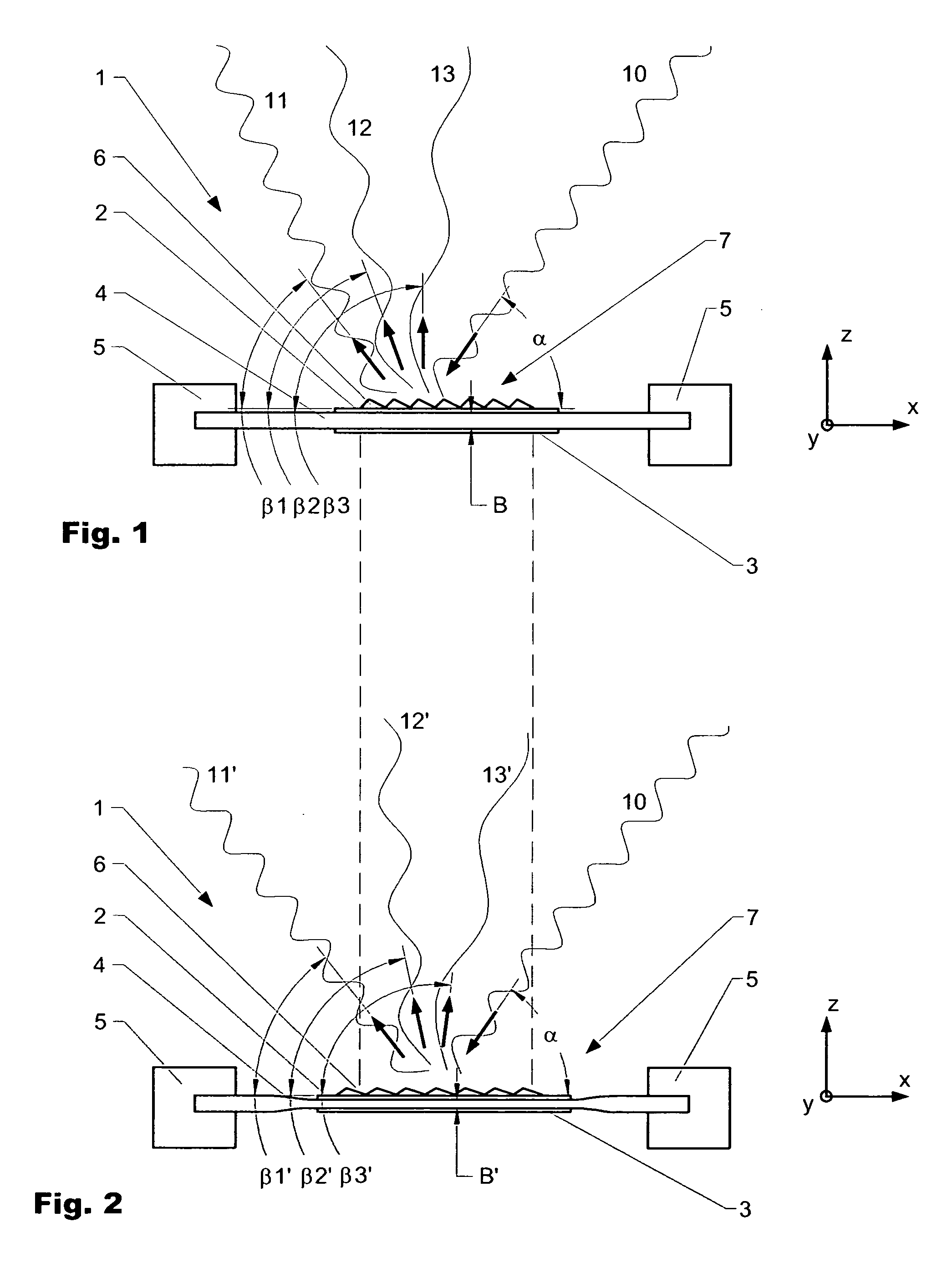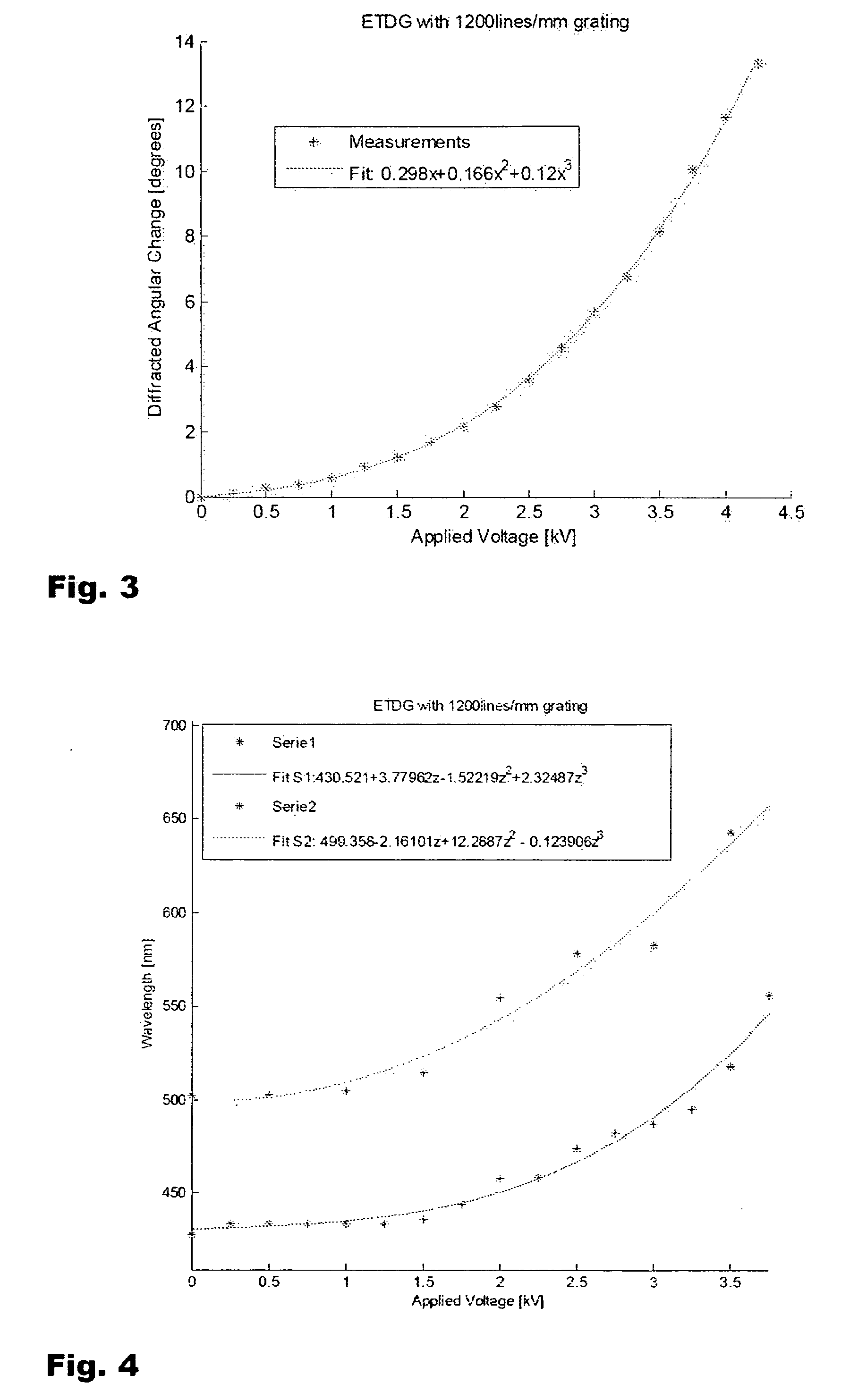Tunable Diffraction Grating
- Summary
- Abstract
- Description
- Claims
- Application Information
AI Technical Summary
Benefits of technology
Problems solved by technology
Method used
Image
Examples
first embodiment
[0061]FIG. 1 schematically shows a tunable diffraction grating 1 according to the present invention in an undeformed state (V=0). The diffraction grating comprises an upper and a lower electrode 2, 3 which encompass an membrane like intermediate layer 4 made out of a deformable material, preferably an elastomeric material. The intermediate layer 4 is held in position by a support 5, if appropriate in a prestretched manner. At least the upper electrode 3 is also made out of a deformable material such that it can deform in lateral direction along with the intermediate layer 4. The intermediate layer 4 and at least the upper electrode 2 are mechanically coupled to each other such that a secondary lateral deformation in xy-plane of the intermediate layer 4 causes a lateral deformation of the upper electrode 2 in the same direction.
[0062]When a voltage (V≠0) is applied to the dielectric elastomer actuator the upper and the lower electrodes 2, 3 attract each other due to electrostatic for...
PUM
 Login to View More
Login to View More Abstract
Description
Claims
Application Information
 Login to View More
Login to View More - R&D
- Intellectual Property
- Life Sciences
- Materials
- Tech Scout
- Unparalleled Data Quality
- Higher Quality Content
- 60% Fewer Hallucinations
Browse by: Latest US Patents, China's latest patents, Technical Efficacy Thesaurus, Application Domain, Technology Topic, Popular Technical Reports.
© 2025 PatSnap. All rights reserved.Legal|Privacy policy|Modern Slavery Act Transparency Statement|Sitemap|About US| Contact US: help@patsnap.com



